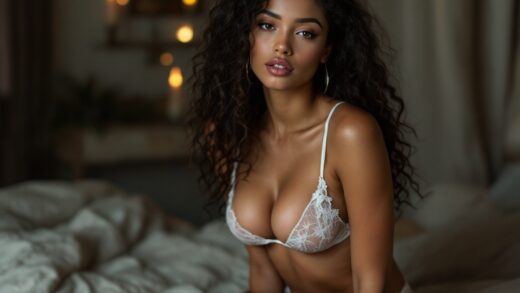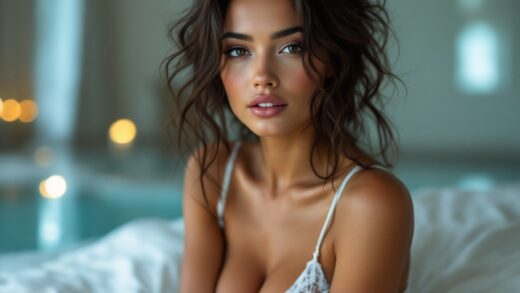In an era where innovation intertwines with technology, the advent of artificial intelligence in the sphere of erotic art heralds a revolutionary shift. This remarkable integration holds the promise of transforming age-old perceptions of erotic imagery and altering cultural viewpoints. By promoting diversity and challenging established stereotypes, AI-generated creations can shine a light on the extensive range of human sexuality that has frequently been disregarded. As we further explore this captivating convergence, we’ll delve into how AI possesses the capability to dismantle the limitations that have historically restricted erotic representation to superficial clichés.
Embarking on the journey of utilizing AI to craft erotic imagery transcends mere technological artistry; it provokes deep inquiries regarding ethics, representation, and societal influence. It compels us to consider: In what ways can we harness this remarkable power to forge a more inclusive narrative within erotic expression? This article will present a thoughtful exploration of how AI is revolutionizing the domain of erotic art, stimulating impactful conversations surrounding inclusivity and identity.
The Power of AI in Artistic Expression
Artificial intelligence is reshaping the way we conceive and create art, harnessing algorithms to produce images that embody a rich array of sexual expressions. By tapping into extensive datasets, AI is capable of generating unique content, thus allowing artistic visions to emanate beyond conventional limits. This technological advancement empowers artists to craft works that may have once remained unimagined. Consequently, AI opens new avenues for artists to reinterpret themes and depictions of sexuality.
Deciphering AI Algorithms in Art Production
Let’s dive into the mechanics of AI generation—how sophisticated algorithms navigate through data to create images that surpass societal expectations. The spotlight is on machine learning models trained on varied datasets, enabling the creation of intricate artistic representations. As artists and technologists harness these tools, they challenge established beliefs about eroticism.

Stereotypes in Conventional Erotic Imagery
Conventional erotic art frequently reinforces detrimental stereotypes that constrict expressions of sexuality. Such representations usually overlook a multitude of identities, especially those that stray from traditional standards of beauty and desire. This leads to a homogenized perspective of sexuality that can hinder both personal and communal expression.
Dominating themes often portray unrealistic body types and limited ideals of desirability. Below are some prevalent stereotypes encountered in traditional erotic depictions:
- Over-sexualization of specific body shapes.
- Representation limited to binary gender identities.
- Emphasis on heterosexual relationships, marginalizing LGBTQIA+ populations.
Championing Inclusivity: The Breaking of Barriers Through AI
By employing advanced algorithms, AI holds the capability to transform erotic imagery and broaden the range of representations. It champions inclusivity by creating art that represents a myriad of identities, body types, and sexual orientations. AI allows the crafting of visual narratives that mirror the true diversity of human experiences, thereby expanding the discourse surrounding sexuality.
| Representation | Conventional Perspective | AI-Enhanced Viewpoint |
|---|---|---|
| Body Types | Uniform | Varied |
| Gender Identities | Binary | Non-binary, fluid |
| Sexual Orientation | Heteronormative | Inclusive |
As these transformations unfold, we observe an increase in the acceptance and validation of diverse sexual experiences portrayed through the art that AI generates. This change allows for richer storytelling and enables individuals to see themselves represented in ways that were previously elusive.

Ethical Considerations in the Crafting of AI-Generated Erotic Art
The emergence of AI-generated erotic art raises significant ethical questions. Creators must navigate matters of consent and representation, ensuring that the images produced do not reinforce stereotypes or objectify individuals. Additionally, cultural sensitivity is critical, as risks of cultural appropriation or insensitivity could foster harmful narratives.
Managing Copyright and Ownership Challenges
Intellectual property presents a complicated landscape in the realm of AI-generated art. The issue of authorship is particularly poignant when AI plays a notable role in the creative process. Navigating the legal frameworks surrounding copyright for AI-generated content poses ongoing challenges, especially within the sphere of erotic art. Creators should constantly evaluate how their work fits into current laws, while also advocating for clearer directives within this dynamic field.
Future Trends in AI and Erotic Imagery
As technological advancements unfold, the future of AI in erotic imagery holds even greater potential for inclusivity and artistic exploration. Emerging trends indicate that we will witness increasingly sophisticated AI algorithms capable of better grasping and representing the intricate nuances of human experiences. This progression could pave the way for personalized artistic experiences that resonate on a deeply individual level.
Ultimately, the ongoing evolution of responsible AI art generation will empower a wider array of creators to reimagine erotic art. The discourse will transition toward not only what can be crafted but also how these artworks influence societal norms and perceptions of sexuality.
Conclusion
The incorporation of AI in crafting diverse erotic imagery reflects a larger cultural movement toward inclusivity and representation. By embracing this technology, artists can confront persistent stereotypes and enhance the tapestry of erotic art. The true promise of AI rests in its ability to nurture conversations about sexuality that capture the complexities of human existence, ultimately expanding boundaries and reshaping viewpoints.
FAQ
- What is AI-generated erotic art? AI-generated erotic art pertains to visuals produced using algorithms that imitate artistic expression, frequently drawing on diverse datasets.
- How does AI assist in dismantling stereotypes within erotic imagery? By utilizing extensive and varied data, AI can create images that showcase a broader spectrum of identities, body types, and sexual expressions, challenging established norms.
- Are there ethical implications in employing AI for erotic imagery? Absolutely, issues such as consent, representation, and cultural sensitivity merit careful attention throughout the creation process.
- Can AI-generated erotic art be classified as original? This remains a nuanced issue; while AI can generate unique visuals, debates regarding authorship and originality endure, often inciting discussions surrounding copyright.
- What considerations should creators keep in mind when producing AI-generated erotic content? Creators ought to prioritize diversity, representation, and ethical practices while remaining mindful of the cultural repercussions of their work.
“


